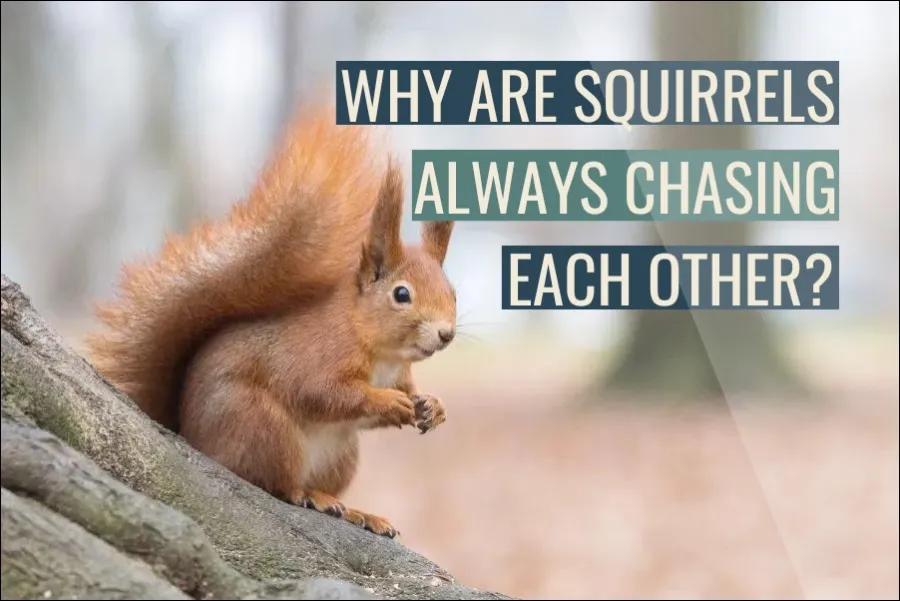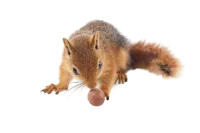
Squirrels are known for their lively and playful activity, which is frequently observed as they chase one other around trees and other things. But why do squirrels participate in this behavior, and what is the purpose of it?
Squirrels chase each other for a variety of reasons, including to establish dominance, communicate availability for mating, mark their territories, and as a form of social play. Chasing helps squirrels practice and hone important survival skills.
This article investigates the causes for squirrels’ apparently continuous chase of one another.
Squirrels’ social behavior
Squirrels are sociable creatures that communicate and interact with one another through a range of activities. Play, grooming, and vocalizations are examples of these activities. Social activities are also used by squirrels to establish dominance and mark their territory. To demonstrate their authority over other members of their group, dominant squirrels may engage in chasing or wrestling actions. Squirrels have complicated social ties and may build deep relationships with other squirrels, particularly within their own family groups, in addition to engaging with other squirrels.
The role of play in squirrel behavior
Play is an essential part of squirrel behavior that serves a number of functions. Play helps young squirrels acquire physical abilities and coordination, as well as social relationships. Play also allows squirrels to practice and polish abilities that they will need as adults, including as foraging, climbing, and predator defense. Squirrels enjoy a variety of games, such as chasing, wrestling, and hide-and-seek. Play may be observed in squirrels of all ages, however it is more prevalent in younger squirrels.
The function of chasing in squirrel communication

Chasing is a frequent squirrel habit that serves several roles in their communication and social relationships. Squirrels may chase each other to establish dominance, indicate mating availability, or mark their territory. Chasing may also be utilized as a sort of social play for squirrels, allowing them to practice and polish crucial survival abilities. In addition to chasing, squirrels interact with one another through vocalizations and body language. Squirrels, for example, may create chattering or buzzing noises when chasing in order to convey their intentions or communicate with other squirrels.
The impact of habitat and diet on squirrel chasing behavior
Squirrels’ pursuing behavior can be influenced by their environment and food. Squirrels living in cities, for example, may display distinct pursuing behavior than those living in more natural areas. This might be due to changes in resource availability, such as food and shelter, or to the presence of other species that influence squirrel behavior. Similarly, dietary changes may influence squirrel pursuing behavior since various types of food alter a squirrel’s energy levels and overall health.
How to observe squirrel chasing behavior safely.
Observing squirrels pursuing one other may be a pleasant and instructive experience, but it is vital to do so responsibly to prevent upsetting the animals. When viewing squirrels, approach them carefully and gently, and leave plenty of space between you and the animals. Avoid making loud noises or quick movements, since they may surprise the squirrels and upset them. If you are viewing squirrels in their natural habitat, make sure to observe all local rules and standards and avoid disturbing the animals or their habitat.
In conclusion
Squirrels are sociable creatures that communicate and engage with one another through a range of activities such as play, grooming, and vocalizations. Chasing is a frequent squirrel habit that serves several roles in their communication and social relationships. Squirrels may chase each other to establish dominance, indicate mating availability, or mark their territory. Chasing may also be utilized as a sort of social play for squirrels, allowing them to practice and polish crucial survival abilities. In addition to chasing, squirrels interact with one another through vocalizations and body language. Squirrels’ pursuing behavior can also be influenced by their environment and food. Squirrels living in cities, for example, may display different pursuing behavior than those living in more natural surroundings, and food may also influence squirrel chasing behavior. Observing squirrels pursuing one other may be a pleasant and instructive experience, but it is vital to do so responsibly to prevent upsetting the animals. When viewing squirrels, approach them carefully and gently, and leave plenty of space between you and the animals. When viewing squirrels in their natural habitat, avoid making loud noises or unexpected movements, and make sure to observe all local laws and standards.
